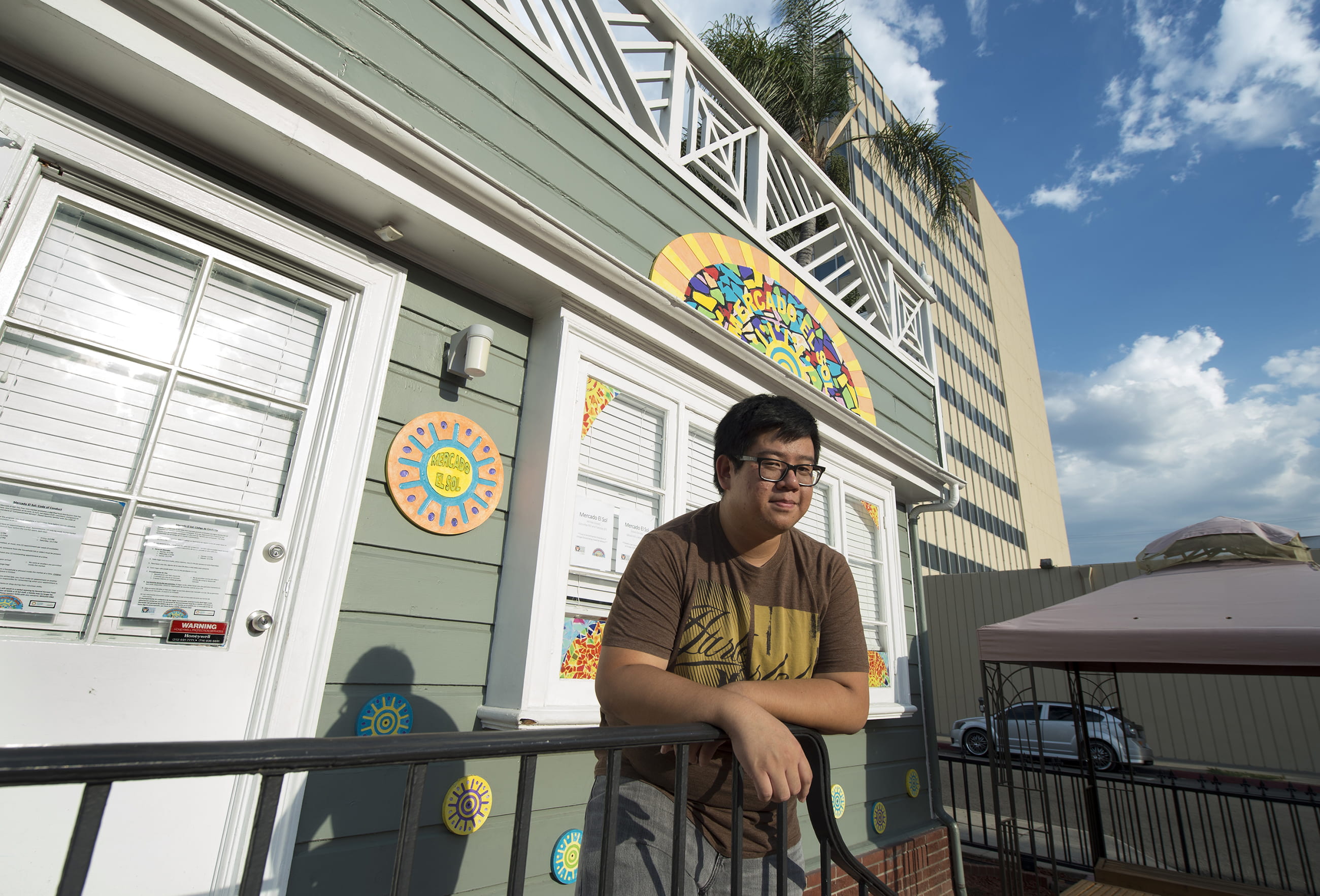Pathway to a Ph.D.
Doctoral candidate David Liu faces the final hurdle: the dreaded dissertation defense

David Liu appeared so poised standing at the head of the long conference table that no one would suspect he had spent the night before rehearsing or had woken up at sunrise to get ready for the tedious commute from West L.A. to Irvine – shrinking his sleep even more.
Maybe the familiar faces at the back of the Dean’s Conference Room in UCI’s School of Education put Liu at ease. They belonged to friends and mentors from his undergraduate years on campus and current colleagues, all of whom had rooted for him throughout his doctoral journey. Now they waited curiously. For some, the ordeal of a dissertation defense was entirely new, and they didn’t know what to expect.
Those who did know sat at the front of the table near Liu. They were three UCI education scholars he greatly respected: Professor Sandra Simpkins; Associate Professor Rossella Santagata; and his adviser, Associate Professor Hosun Kang. Angela Calabrese Barton, a professor of educational studies at the University of Michigan, participated via Skype. All had once been in Liu’s shoes and, since then, had gone on to produce the pioneering research that had inspired his own. Perhaps they could empathize with what Liu would later recall as “a blur of nervousness, pressure, excitement and pride.” Together, they formed his dissertation committee and would determine whether or not he received a Ph.D.
It was 10 a.m. on Sept. 12, and Liu had his PowerPoint presentation ready, with the title of his treatise on-screen: “Growing STEMs of the Buried Seeds: Developing STEM Identities of Mexican American Girls Across Time and Space,” which references the Mexican proverb “They thought they could bury us, but they didn’t know we were seeds.” It was the culmination of five years as a full-time graduate student – three of them spent conducting intensive research.
The pinnacle of academia
The concept behind the Doctor of Philosophy, the highest-ranking degree in academia, is that beyond mastery of an established field of knowledge, a scholar should also work to expand that field. This contribution of new ideas is the natural next step after a bachelor’s or master’s degree, and that’s where the dissertation comes into play. The Ph.D. student proposes a thesis – a strong claim or hypothesis related to his or her research – then sets forth to prove it through a variety of evidence. The result is a dissertation, usually more than 100 pages summarizing and contextualizing the work undertaken to support the thesis.
However, the most stressful part may be what happens after the writing is completed: the dissertation defense. The process involves multiple steps. First, the doctoral candidate presents his or her research to several highly distinguished scholars with relevant expertise who have already read the text. Then he or she must respond to questions and criticisms from the panel – i.e., defend the integrity of the dissertation – a discussion that takes about 30 minutes. After that, the candidate is asked to leave the room while committee members deliberate privately and vote on whether or not to bestow the Ph.D.
Liu’s presentation reflected the years he’d devoted to designing, implementing and researching a science, technology, engineering and math education program for fifth-grade girls. His thesis was in response to a glaring problem: Only 3 percent of STEM majors in higher education are Latinas. Although Liu was not the first researcher to tackle this issue, he took a different approach. Rather than focus on what young Latinas lack – contributing to their underrepresentation – he opted to explore what happens when their cultural resources and practices are leveraged to help them see their STEM potential.
Through his Super Science Squad after-school program at Santa Ana’s El Sol Science & Arts Academy, Liu was able to observe immediate results among the fifth-grade Latinas. He recalls, “Instead of conducting research on what successful STEM learning could look like, I collaborated with the school by researching what successful STEM learning does look like.”
Metamorphosis
The committee members asked Liu about details in his data, the presentation of information and big-picture implications. Questions mainly came from a place of curiosity. Liu had already been approved by Kang for a defense, meaning that his research had been deemed strong enough to withstand scrutiny. All he had to do now was defend it with a delicate balance of humility and pride.
Afterward, Liu stepped out with his friends and supporters and waited in the lobby for one of the most defining decisions of his life. Although the presentation and defense were over, his nervousness persisted. After all his work, the idea of going back to the drawing board was overwhelming.
Gaining his Ph.D. would mark the end of a nearly decadelong academic career at UCI. After earning bachelor’s degrees in anthropology and public health policy here, Liu found his calling while serving as a full-time AmeriCorps member at the Providence Children’s Museum in Rhode Island. Regularly designing hands-on STEM workshops for low-income 1- to 11-year-olds exposed him to the importance of early STEM education in underrepresented groups, so – seeking to have a greater impact – he chose to be a researcher.
Like his study participants, Liu also experienced insecurity about his scientific abilities. “I always thought that when I finally finished the dissertation, I would have this magical metamorphosis and become a researcher,” he says. “I had to understand that the dissertation is not what makes me a researcher, because I already am a researcher who produced a dissertation. I forgot to believe in myself, and that was the most challenging part.”
As for anyone awaiting a final grade – and this “grade” was as final as they come – time seemed to pass in slow motion. After 10 eternal minutes, a door clicked open and the chatter in the lobby ceased. It was Kang, extending her hand to her former student: “Congratulations, Dr. Liu.”


